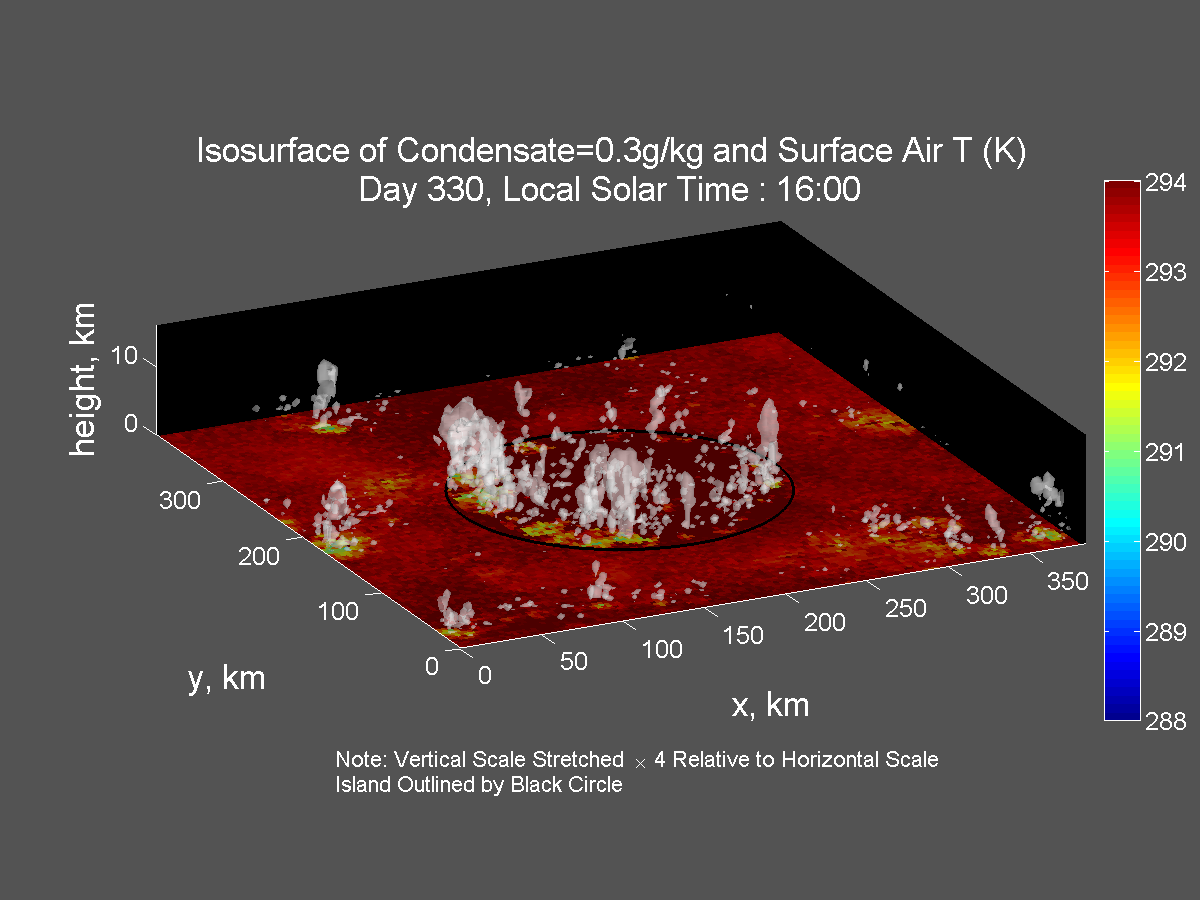Dry and Semidry Hurricanes
Below are a few movies from a paper that I worked on with Dan Chavas. They show the how surface wind speeds evolve in "hurricane-world" simulations over surfaces of different moisture availability. See Cronin and Chavas (2019) "Dry and semidry tropical cyclones" for more details.
Hurricane world over a wet surface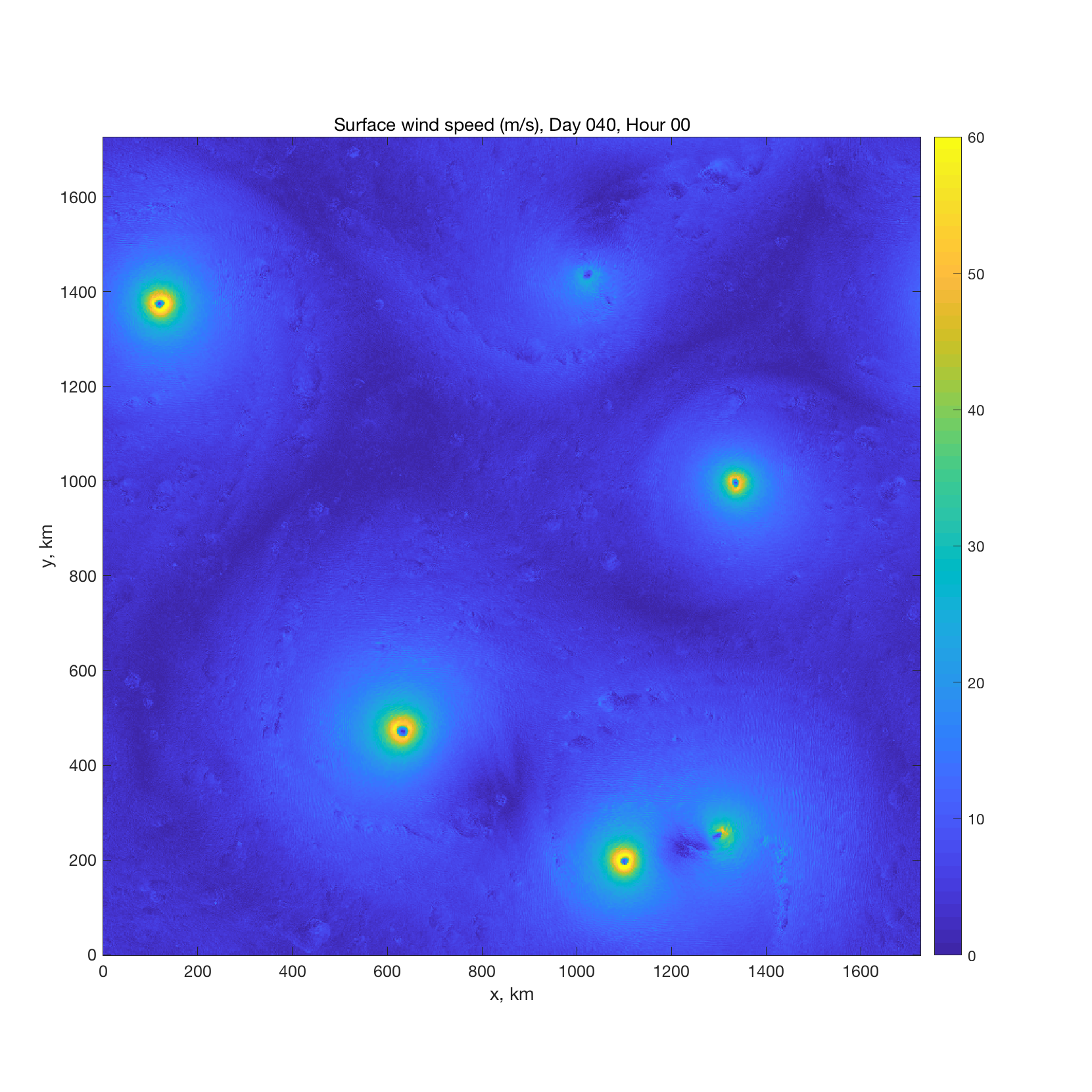
Hurricane world over a half-dry surface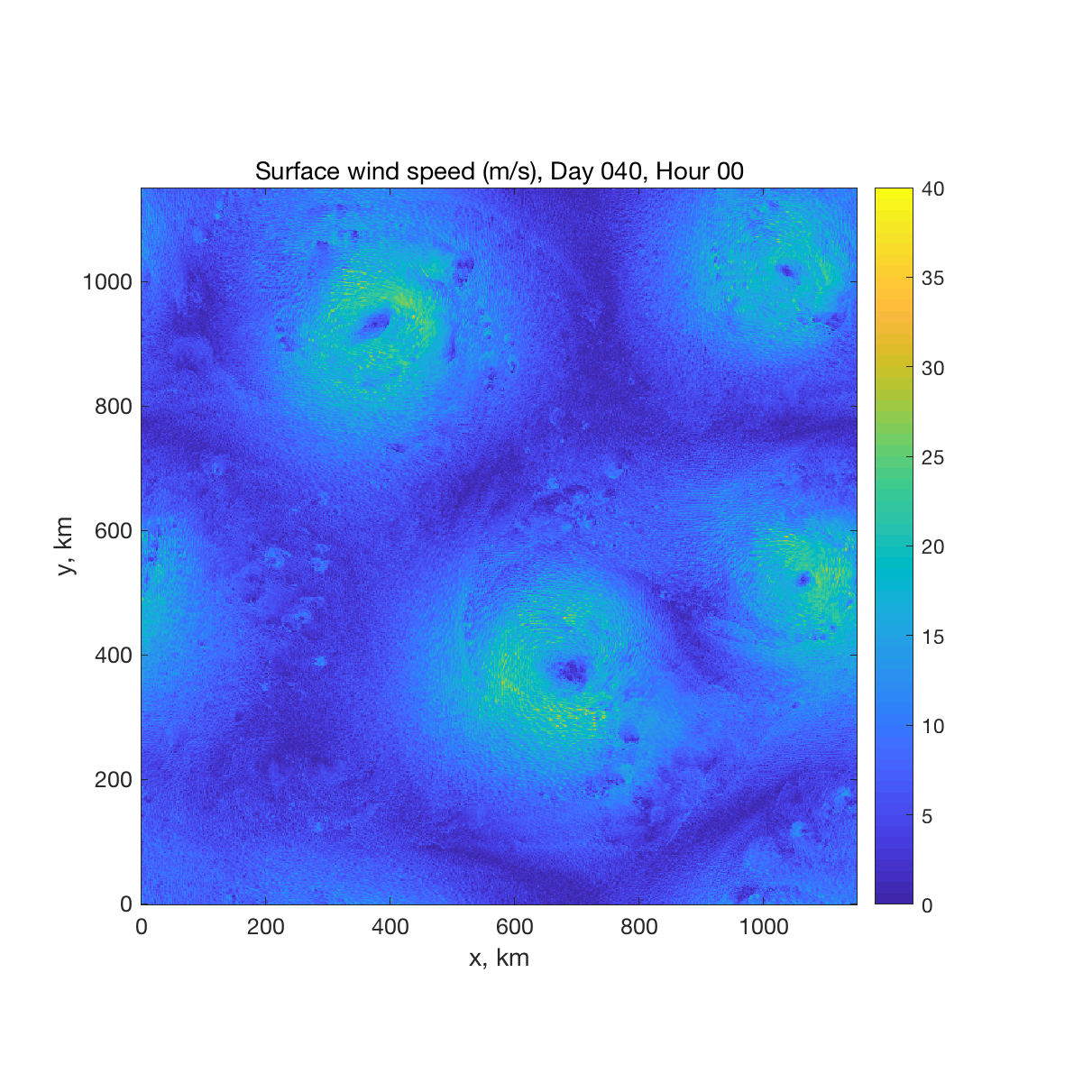
Hurricane world over a fully dry surface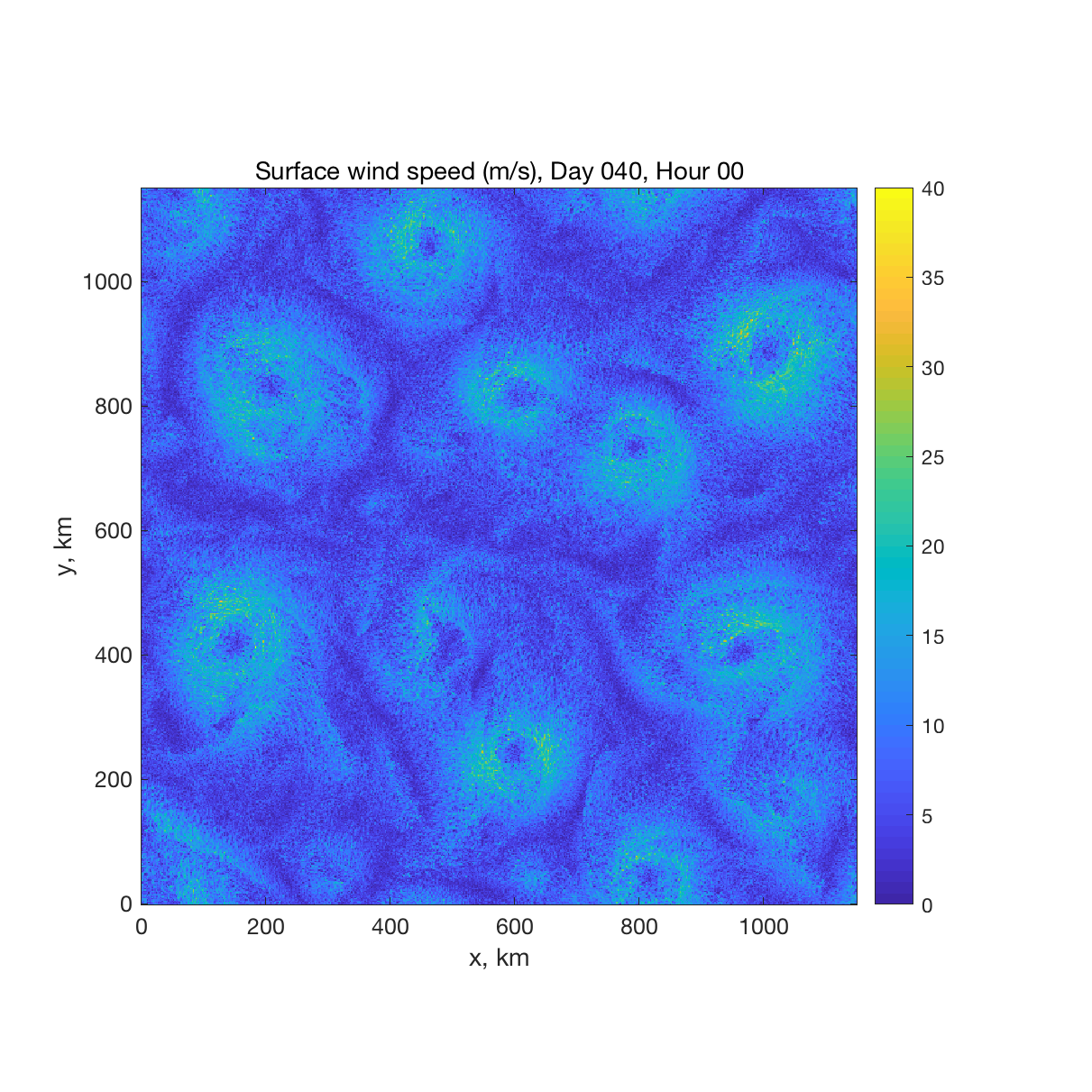
Cold air formation
Below is a movie of three simulations of cold air formation, where an initial temperature profile is allowed to cool without any sunlight for two weeks. The three left panels show how clouds at different horizontal and vertical locations form and evolve, and the right panel shows how the average temperature profile as a function of height in each case changes with time. See Cronin, Li, and Tziperman (2017) "Suppression of Arctic air formation with climate warming: Investigation with a 2-dimensional cloud-resolving model" for more details.
Cold air formation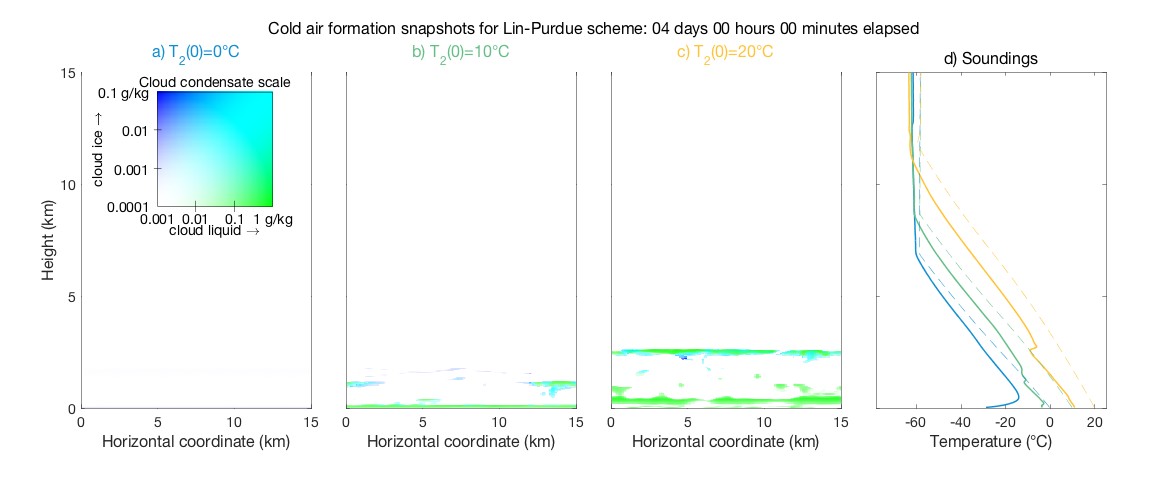
Self-Aggregation in a Channel
Below is a movie of a simulation from a paper that I worked on with Allison Wing. It shows the evolution of clouds, precipitation, and column water vapor in a long channel. The clouds cluster over a period of tens of days, and produce moist regions where there is lots of rain, interspersed with dry regions where it hardly rains at all.
Channel, SST=305 K, 75 days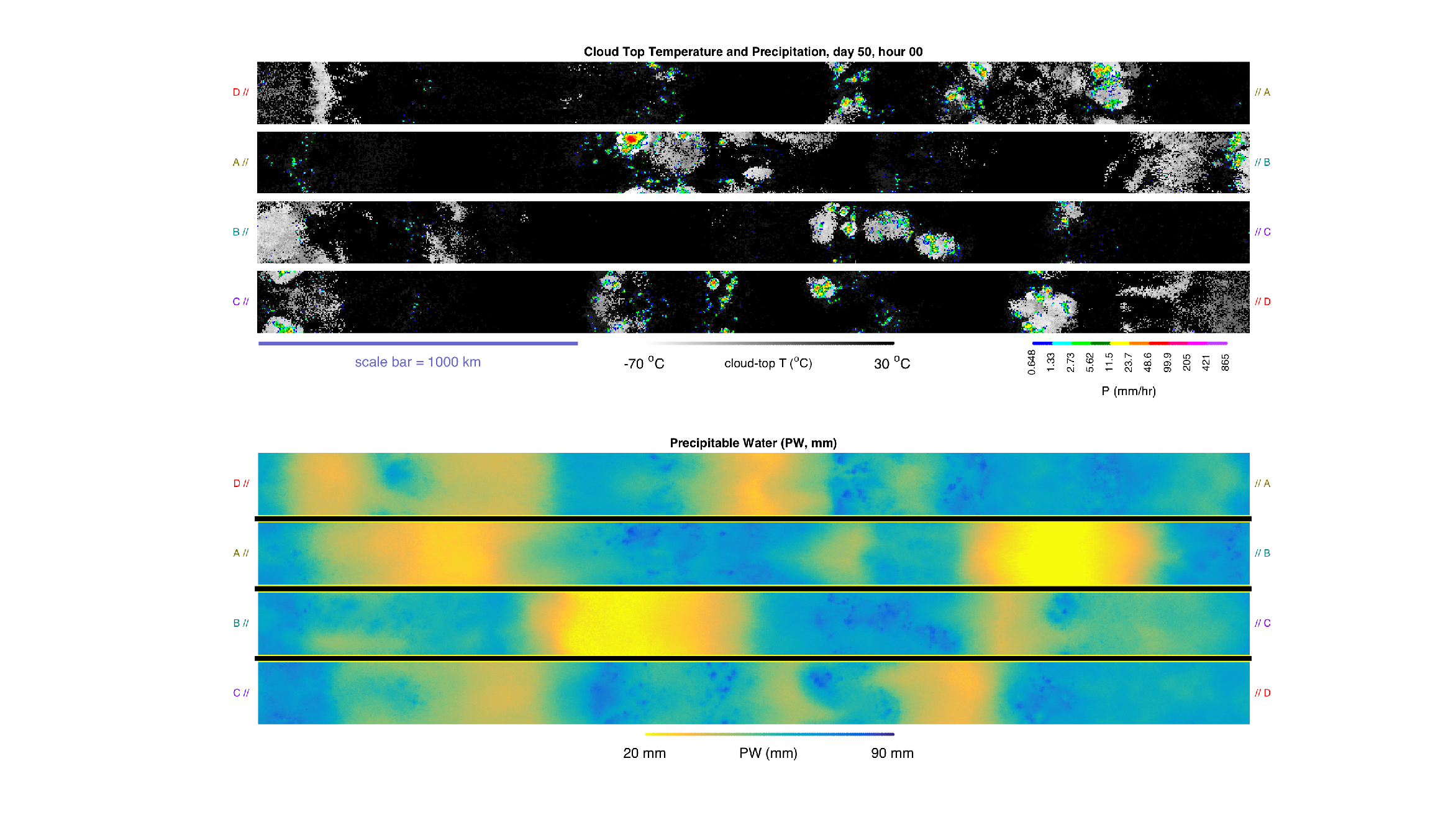
Island Rainfall Enhancement
Below are several movies produced from the simulations with the SAM (System for Atmospheric Modeling) Cloud-system resolving model. The colors in all simulations indicate surface air temperature (cold at night over the island, or when it's raining and air is cooled by evaporation), and the white shading represents the simulated clouds. In all simulations, the domain is 'doubly-periodic', which means that when a cloud passes out of the north side of the box, it comes in the south (or vice-versa, and same with the east-west direction). The sun rises at 6 hours local solar time, and sets at 18, with 12 being noon.
48-km radius island, 2 days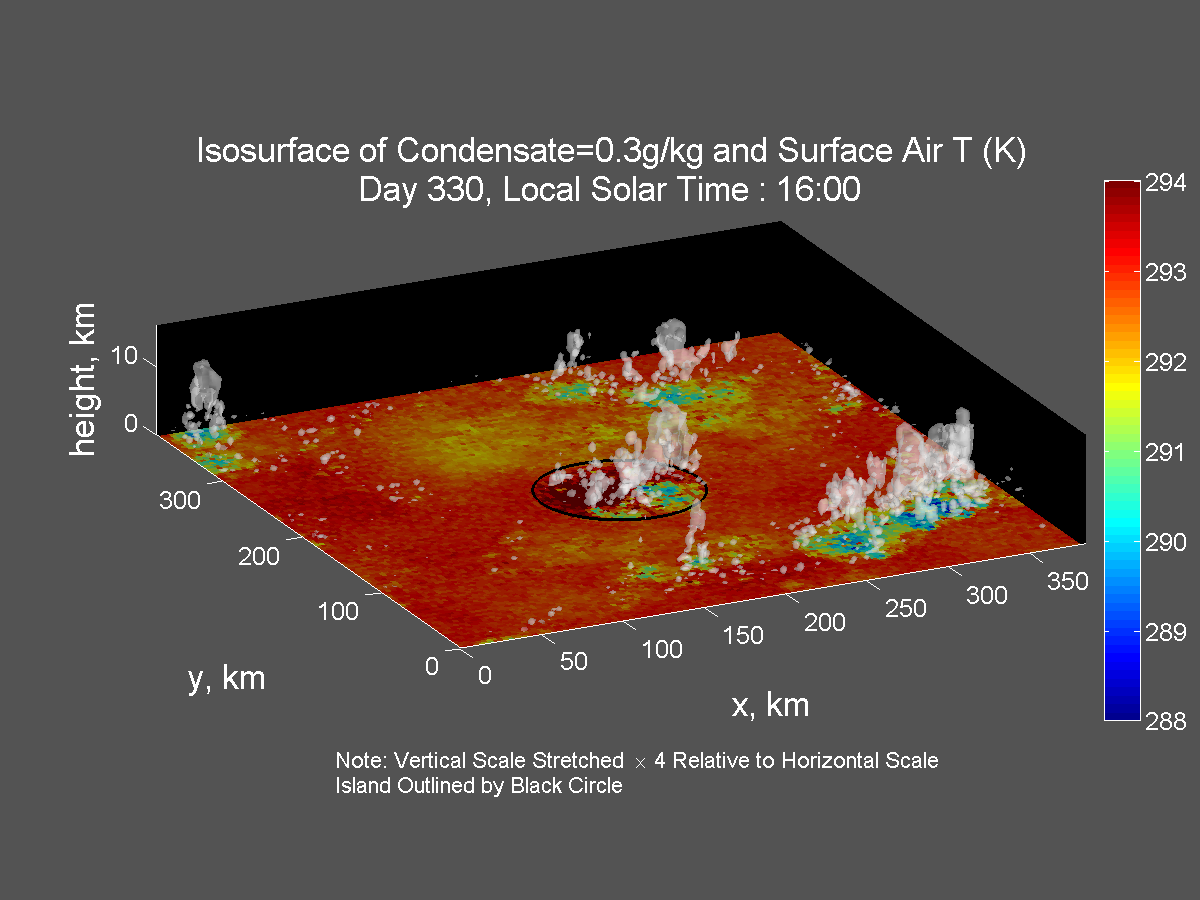
Higher-resolution simulation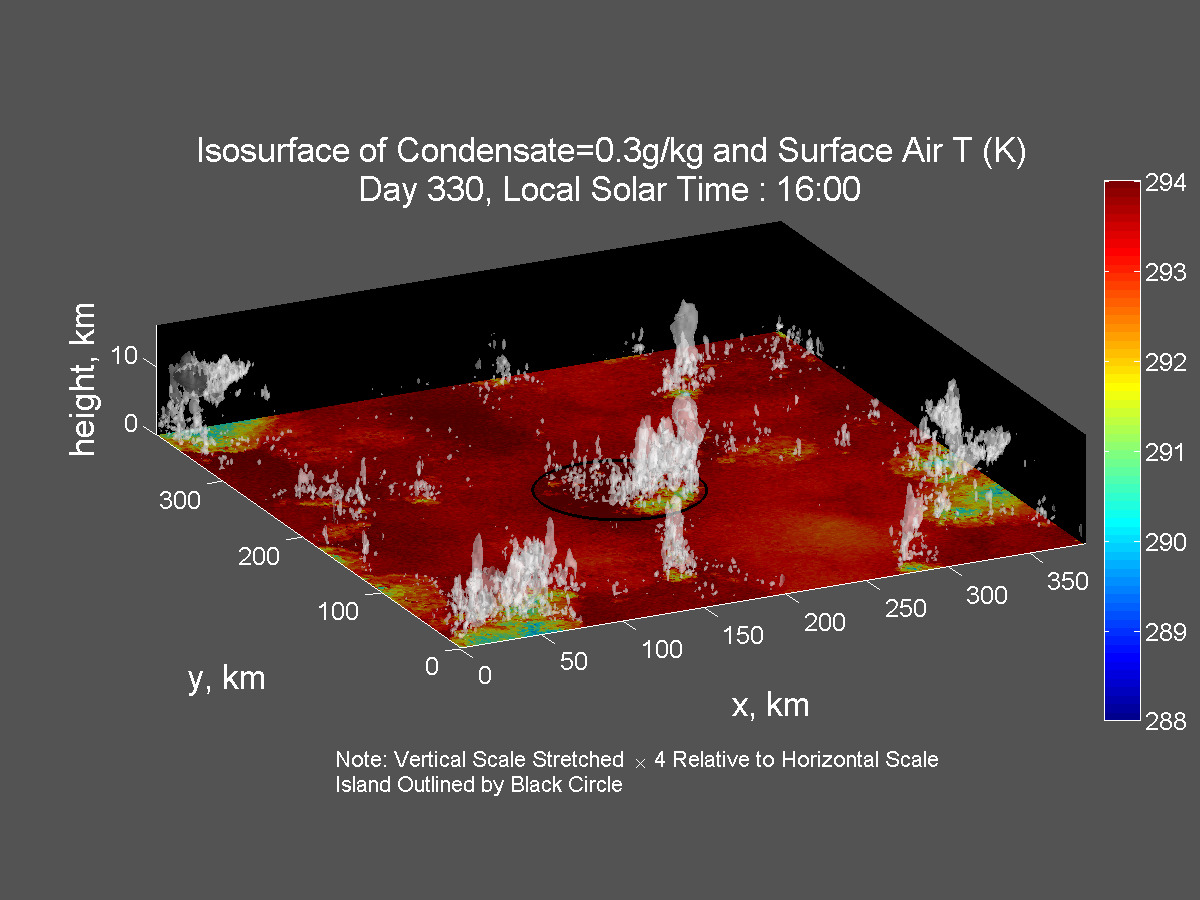
No surface evaporation over island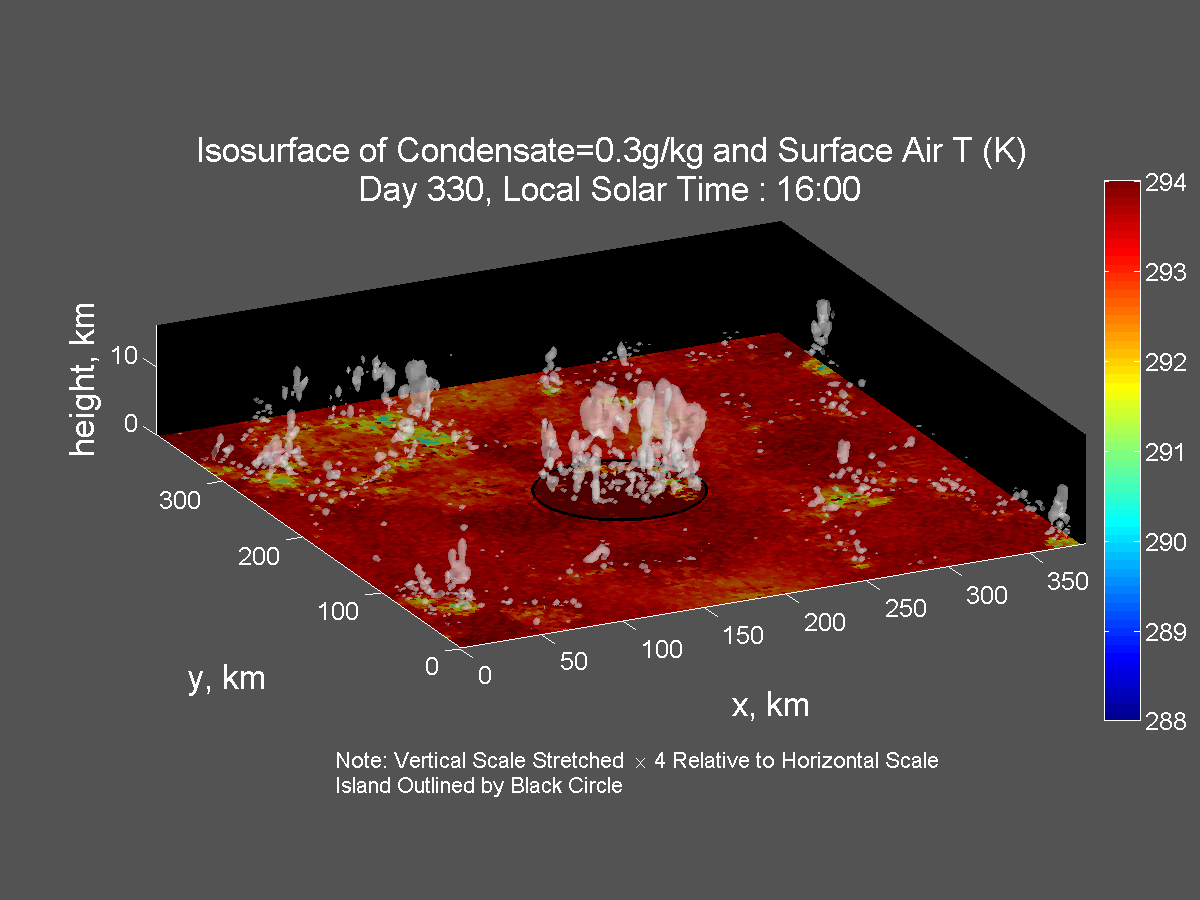
A smaller island (24 km-radius)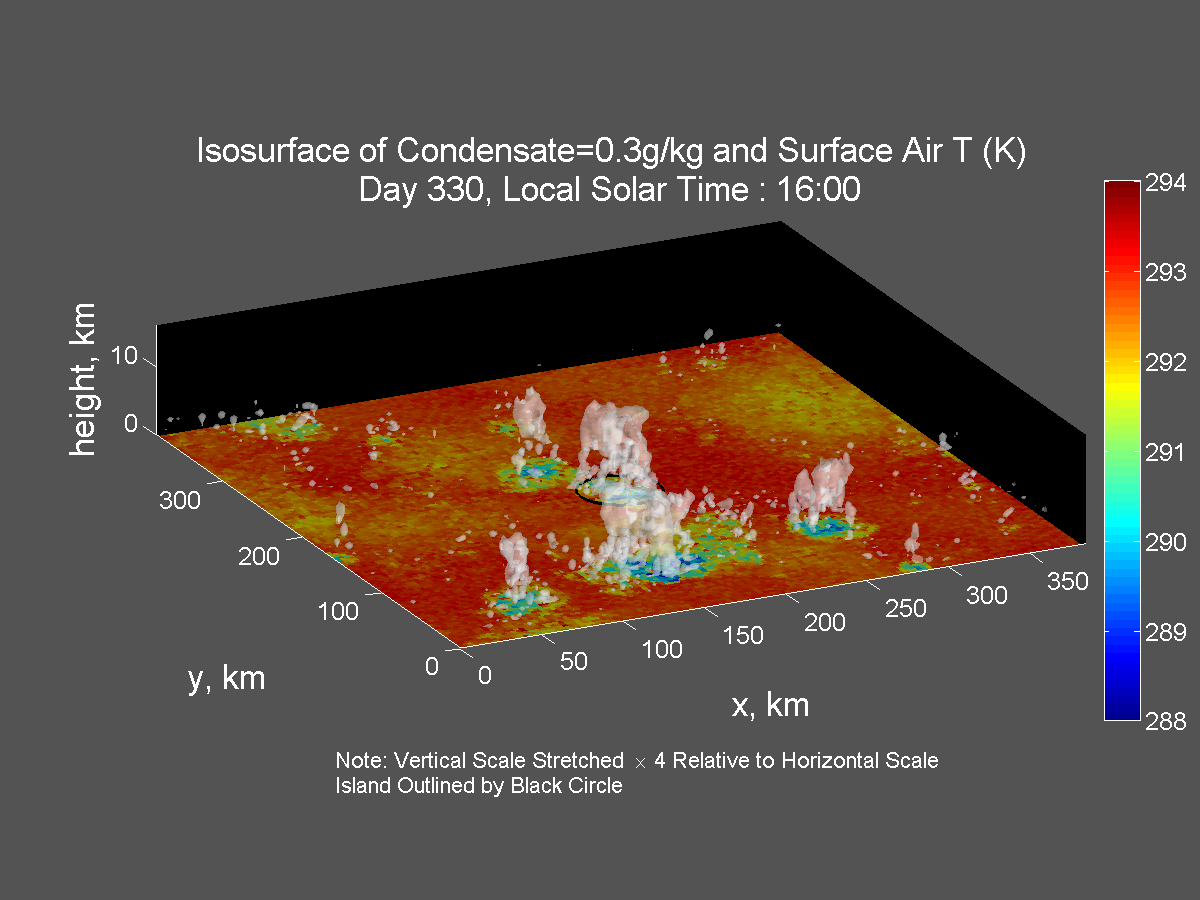
A larger island (96 km-radius)